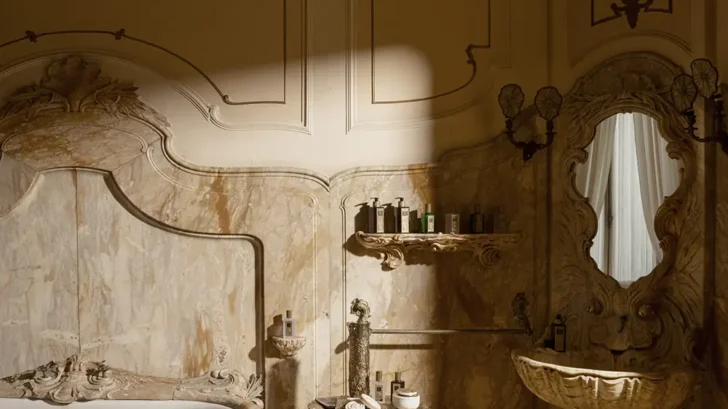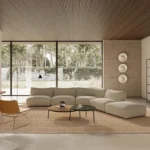
To mark its 10th anniversary, Artemest returns to Milan Design Week 2025 with the third edition of L’Appartamento. Set inside the 19th-century Palazzo Donizetti, the exhibition brings together six celebrated interior design studios to reimagine its rooms using furniture, lighting, and decorative pieces crafted by more than 180 Italian artisans. Rather than merely presenting objects, the exhibition constructs an immersive dialogue between contemporary design and Italian craft.
Located on Via Gaetano Donizetti 48, the palazzo features Baroque ornamentation, Renaissance flourishes, and Liberty-style elegance. Its architectural richness becomes both a canvas and a collaborator for the exhibition’s narratives, where each room offers a new lens on heritage and reinterpretation.
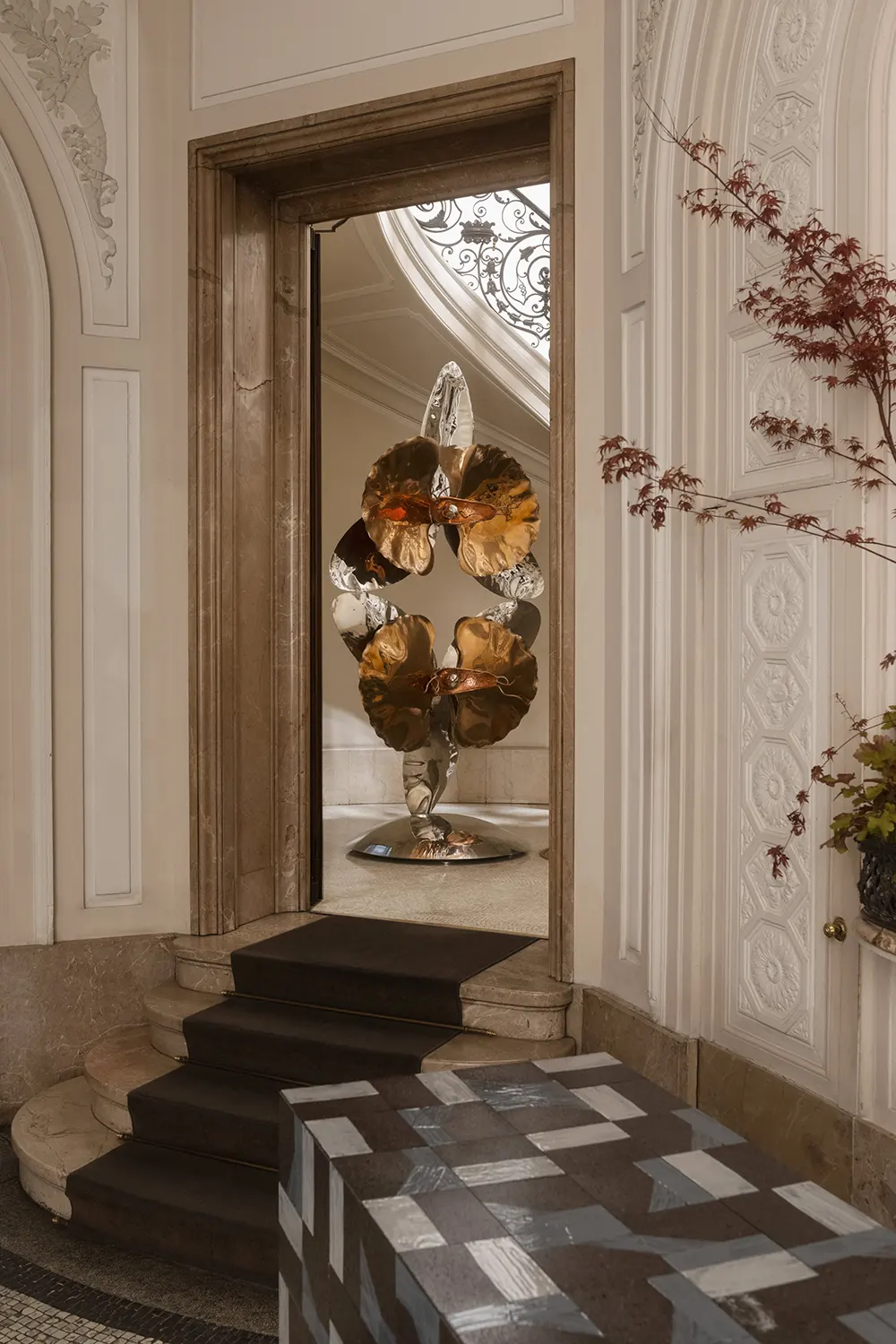
The Foyer by Simone Haag
Australian designer Simone Haag opens the experience with a room that embraces architectural history while leaning into Italy’s modern design vanguard. Haag arranges collectible contemporary pieces against intricate frescoes and ornate details. Sculptural furniture and curated objects create visual tension and harmony, using color and form to link the past with a forward-thinking aesthetic. Her vignette becomes a transitional zone between centuries, where color reconciles eras and sculptural form provokes pause.


The Reading Room by Nebras Aljoaib
Saudi designer Nebras Aljoaib reshapes the reading room and studio into a space for reflection and dialogue. She replaces the usual desk-centered layout with central seating, encouraging informal conversation. Standout elements include the Marina chandelier by Bottega Veneziana and custom pieces like the Sling Chair. A palette of marble, brass, and wood, with accents of black vases and geometric patterning, animates the room with mid-century forms and modern purpose.

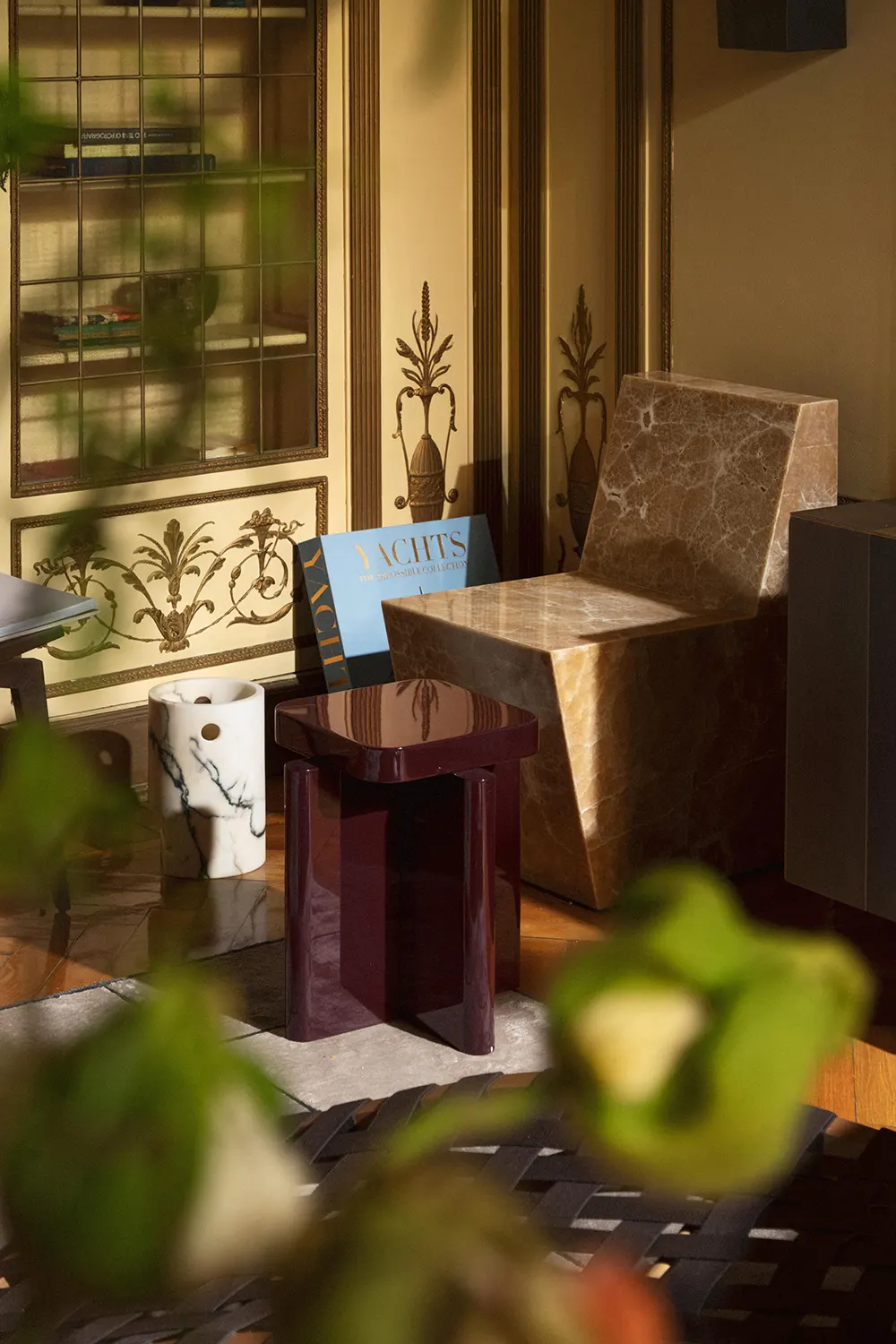
The Grand Salon by Meyer Davis
La Sirena, conceived by Meyer Davis, draws from myth and memory. Inspired by sirens and the tension between enchantment and danger, the salon features four seating arrangements to promote movement and exchange. Reflective materials, sculptural lighting, and veined stones animate the frescoed ceiling above, while curated objects and textured finishes spark discovery. The design invites visitors not only to observe but to feel submerged in its layered mood.


The Dining Room by Romanek Design Studio
Brigette Romanek reimagines the grandeur of the dining room as a warm and joyful setting for shared meals. Original parquet floors, high ceilings, and natural light create a setting that Romanek balances with color, texture, and contemporary form. Her palette, pinks, creams, greens, and golds, evokes joy, while mirrors and artworks build visual intrigue. Romanek’s goal was simple: to design a space not only admired, but lived in, where meals, conversation, and memory collide.
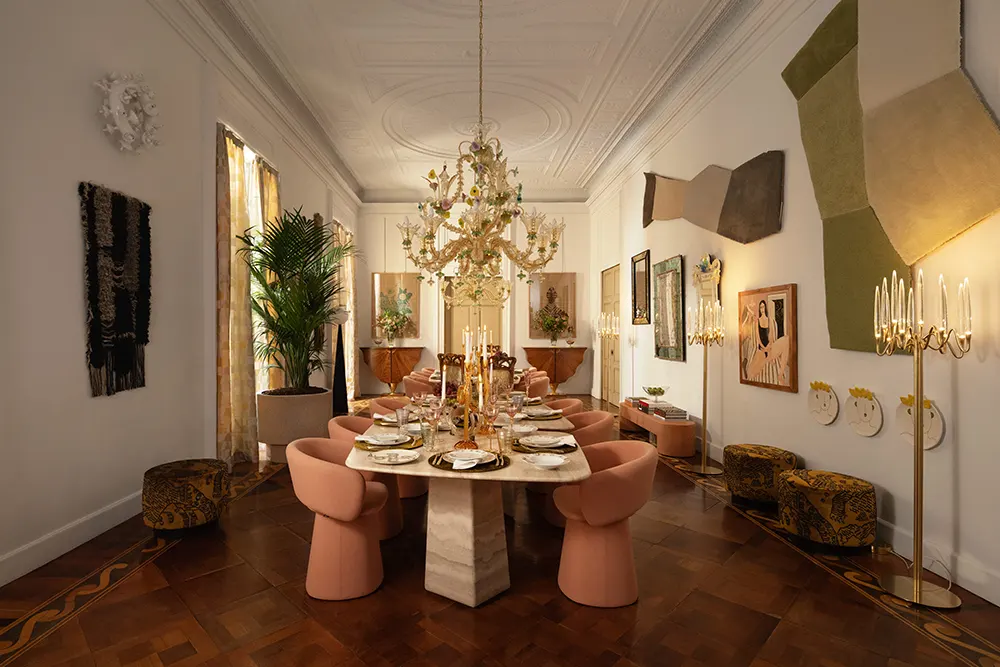
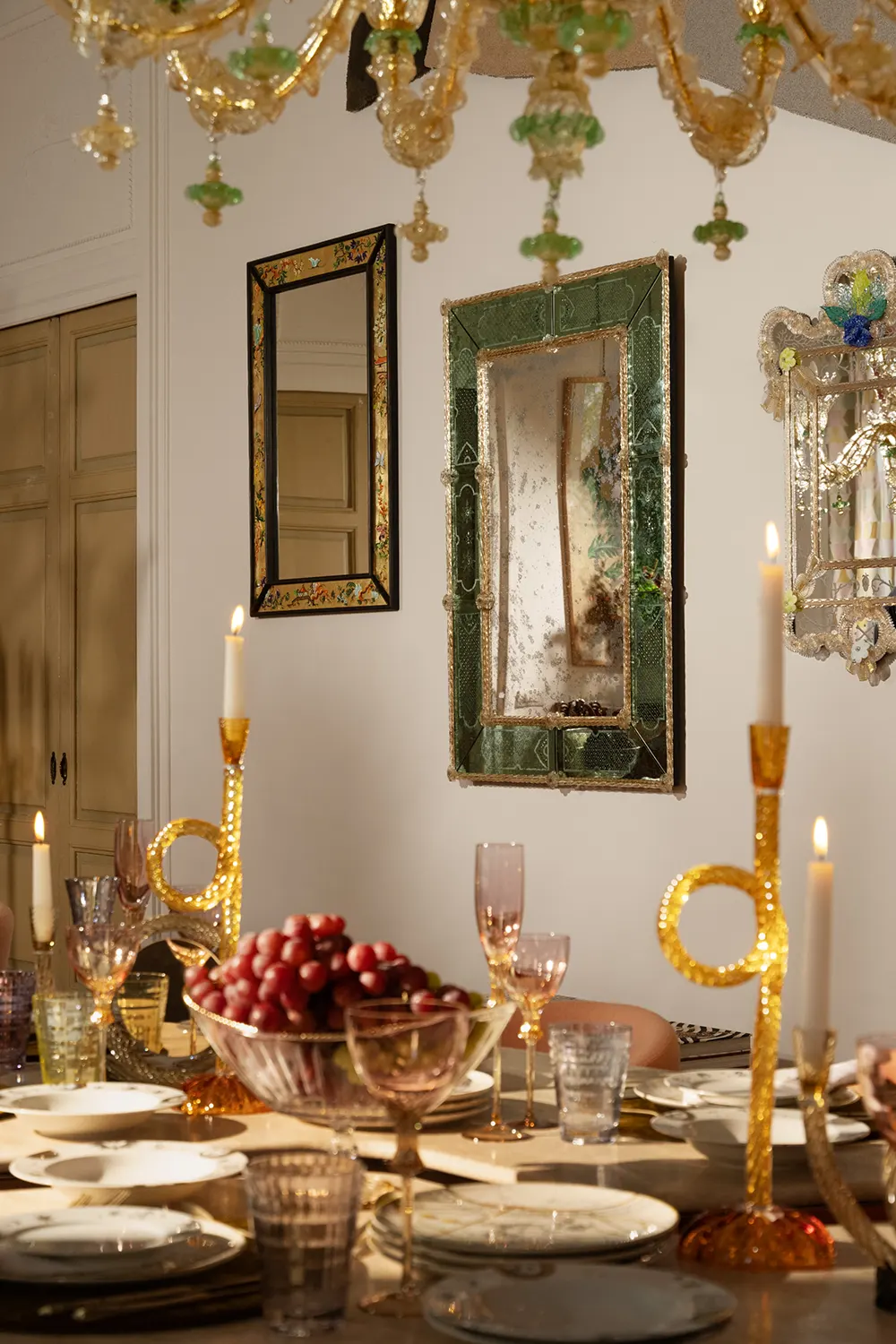
The Entertainment Room by 1508 London
1508 London transforms the traditional salon into a richly layered environment inspired by elite members’ clubs. With 15 curated vignettes, the room unfolds through moments of surprise and intimacy, from a sculptural Murano-glass bookshelf to a central seating installation that encourages connection. The bar takes center stage, celebrating the art of mixology. A series of curated art pieces center women as cultural icons, echoing the salon’s intellectual legacy. The room becomes a sensory space for conversation and curiosity.
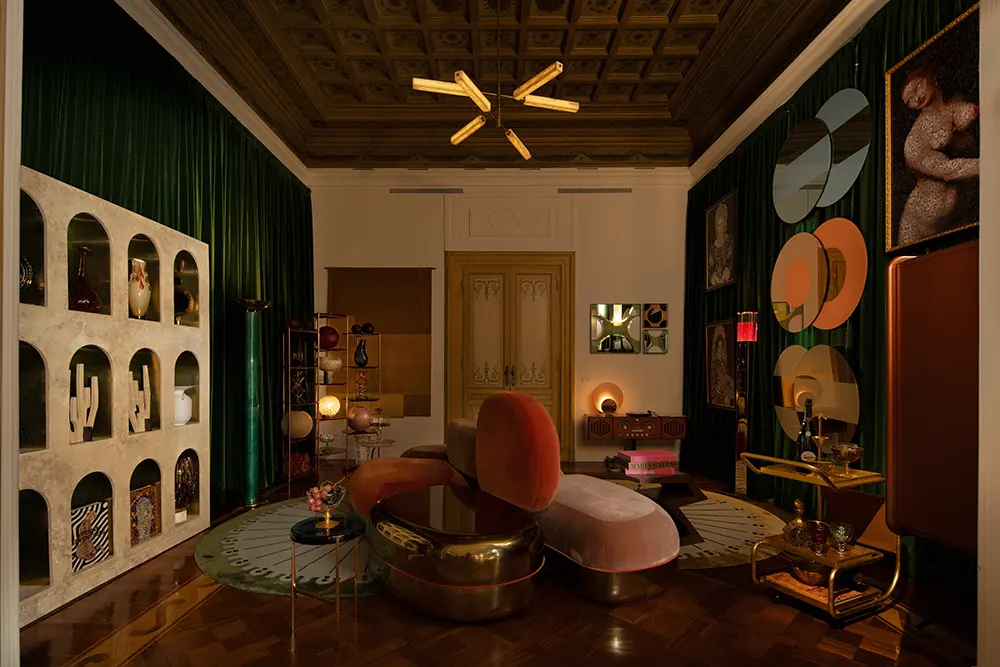
The Bedroom by Champalimaud Design
Champalimaud Design draws from 1960s Italian cinema to build a bedroom layered in elegance and play. A cylindrical ivory chandelier anchors the vanity area, while sculptural side tables and Venetian mirrors add depth. The bedroom itself features a scenic citrus-themed wallcovering, a velvet sofa in vivid orange, and sculptural furnishings that play with proportion. A nearby terrace completes the suite with a lacquered desk and textured artworks, extending the narrative into reflection and quiet glamour.
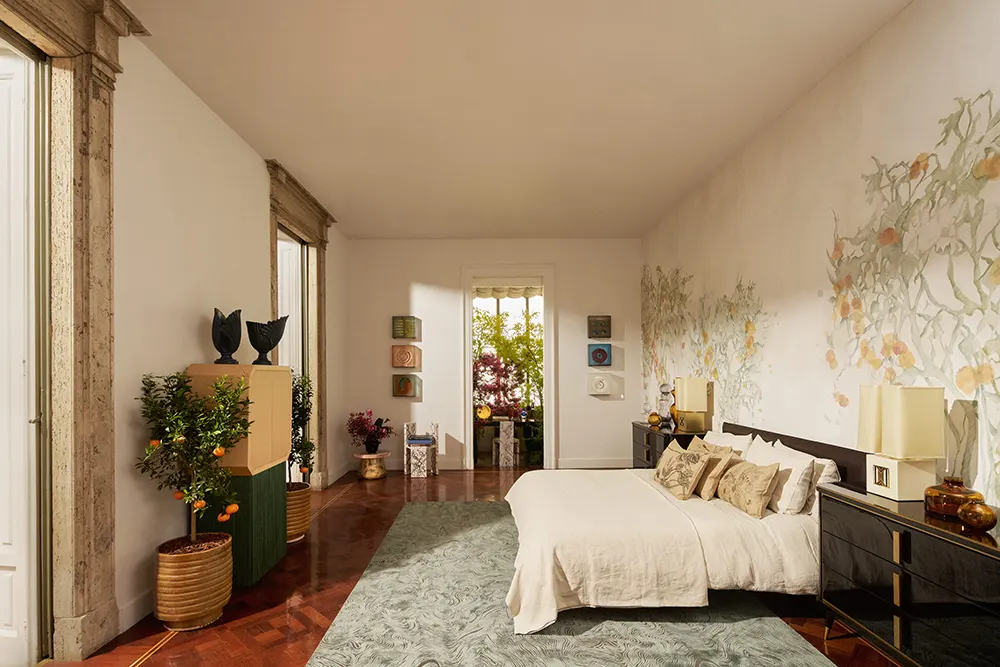
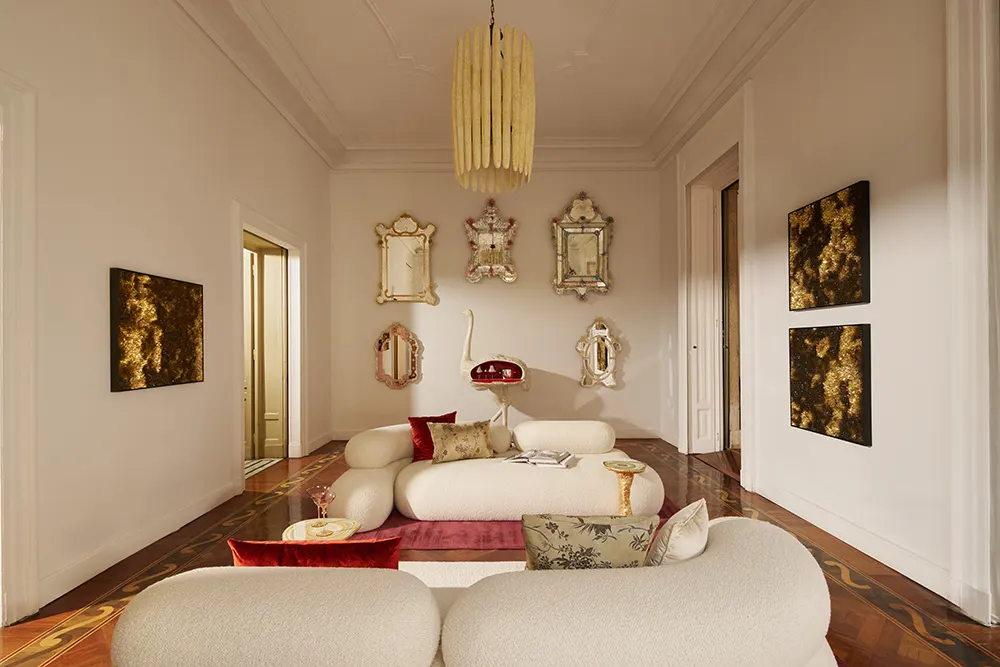
Craftsmanship as Experience
Throughout L’Appartamento, Artemest showcases the imagination of Italy’s finest makers. From hand-carved seating and chandelier glasswork to lacquered surfaces and bespoke textiles, each element reflects the range and nuance of artisanal design in Italy today. With over 180 contributing artisans, brands, and artists, Artemest presents an ecosystem of creative exchange.
